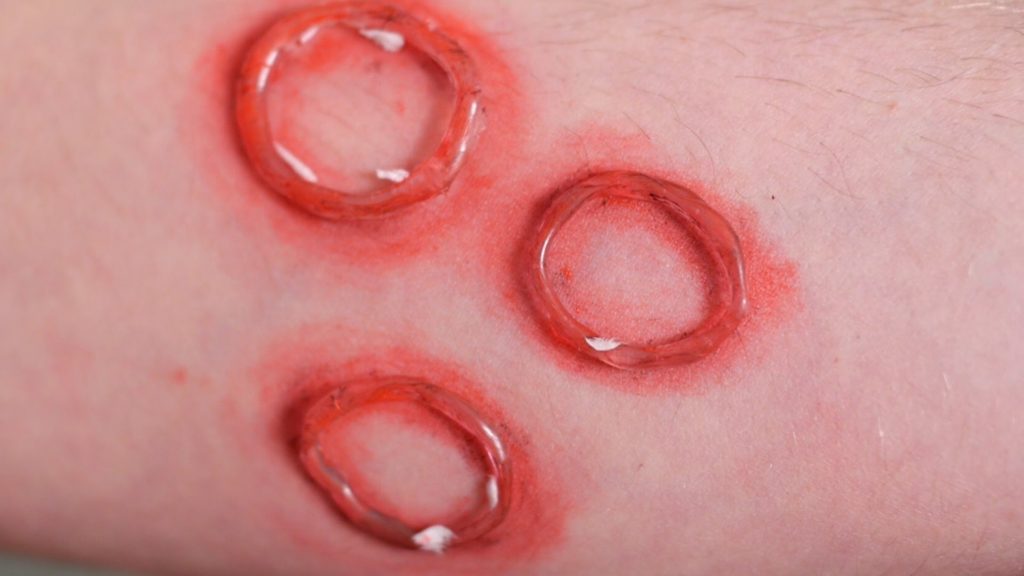The symptoms of a tinea fungal infection depend on where the infection is.
Ringworm (on the skin)
The symptoms of ringworm include:
a ring-like red or silvery rash on your skin – your skin will look red and irritated around the ring, but healthy inside
scaly, itchy and inflamed skin
In more severe cases:
the rings may multiply, grow in size and merge together
the rings may feel slightly raised and the skin underneath may be itchy
blisters and pus-filled sores may form around the rings
The ring spreads outwards as it progresses. You can have one patch or several patches of ringworm, and in more serious cases, your skin may become raised and blistered.
Face and neck ringworm
Ringworm on the face and neck may not appear ring-shaped, but may be itchy and swollen, and it can become dry and crusted. If you have a beard, you may notice patches of hair breaking away.
Hand ringworm
Ringworm on the hand often causes the skin to become thicker on the palm and in between the fingers. It may affect one hand or both and normally only appears on one side.
Fungal scalp infection (tinea capitis)
The symptoms of a fungal scalp infection include:
small patches of scaly skin on the scalp, which may be sore
patchy hair loss
an itchy scalp
In more severe cases:
small, pus-filled sores on the scalp
crusting on the scalp
bald patches (if your hair is affected)
In very severe cases, a large inflamed sore called a kerion may form on your scalp. This can ooze pus, and you may also have a fever and swollen lymph glands.
Athlete’s foot (tinea pedis)
The main symptom of athlete’s foot is an itchy, dry, red and flaky rash, usually in the spaces between your toes. In more severe cases, you may have:
cracked skin in the affected area
blisters, which may ooze or crust
swelling of the skin
a burning or stinging sensation in your skin
scaling patterns around your sole, between your toes and on the side of your foot
Read more about athlete’s foot.
Jock itch (tinea cruris)
The symptoms of jock itch include:
red-brown sores, which may have blisters or pus-filled sores around the edge
itchiness and redness around your groin area, such as your inner thighs and bottom (the genitals are not usually affected)
scaly, flaky skin on your inner thighs
Exercising, walking and wearing tight clothing or underwear can make the symptoms of a groin infection worse.
Fungal nail infection (onychomycosis)
The symptoms of a fungal nail infection include:
a whitish thickening of the nail
discolouration (the nail can turn white, black, yellow or green)
the nail can become brittle and start to fall off
the skin around the nail may be sore and irritated
Read more about fungal nail infection.
When to seek medical advice
Make an appointment to see your GP if you:
or your child develop the symptoms of a fungal scalp infection
have ringworm that has not improved after two weeks of treatment with antifungal cream
have another medical condition, or you’re having medical treatment that is known to weaken your immune system, such as chemotherapy or steroid tablets
Read more about how fungal infections are diagnosed.
